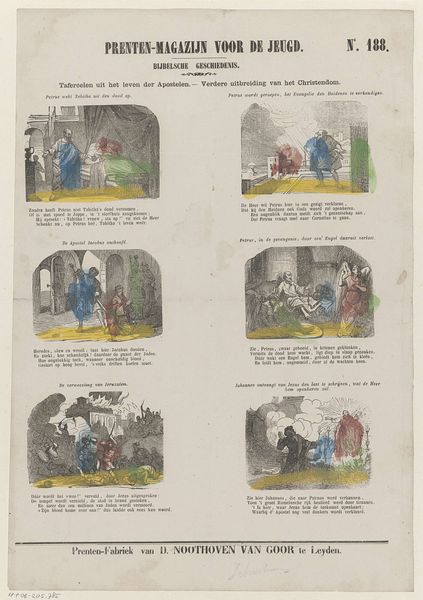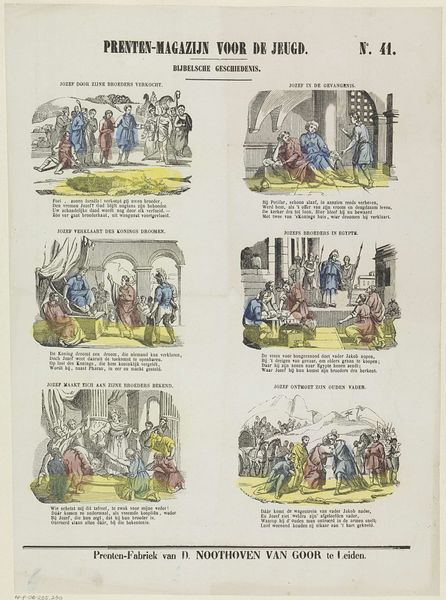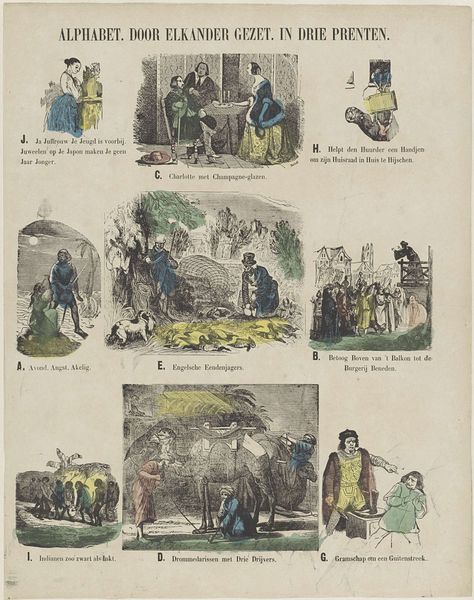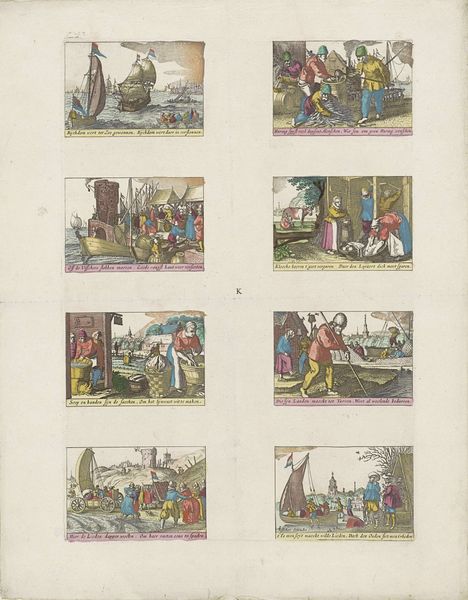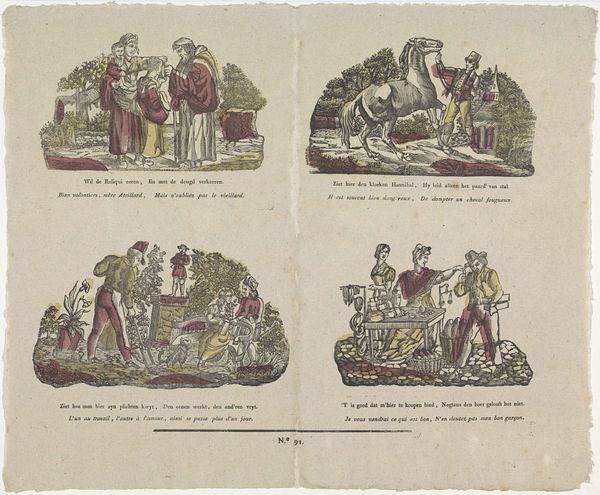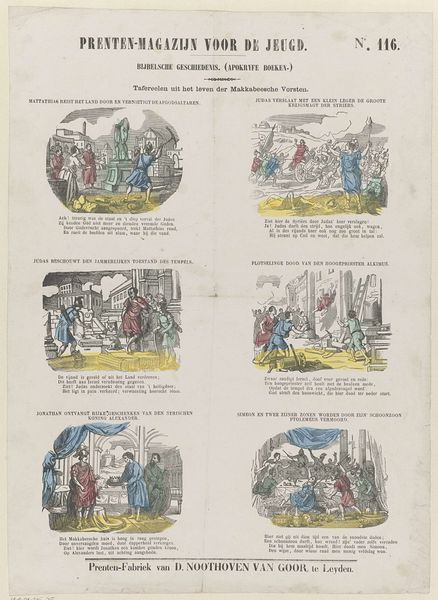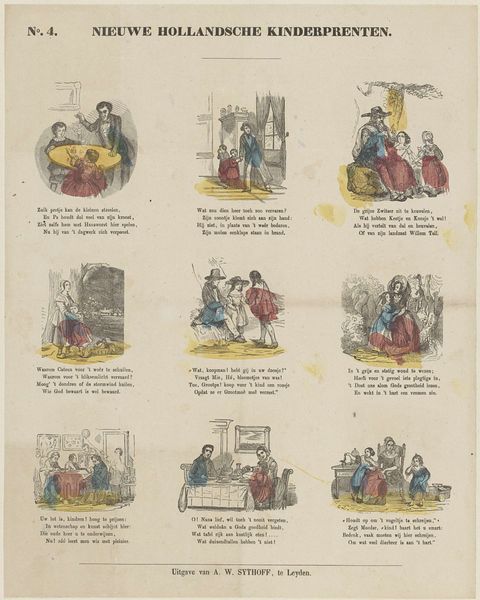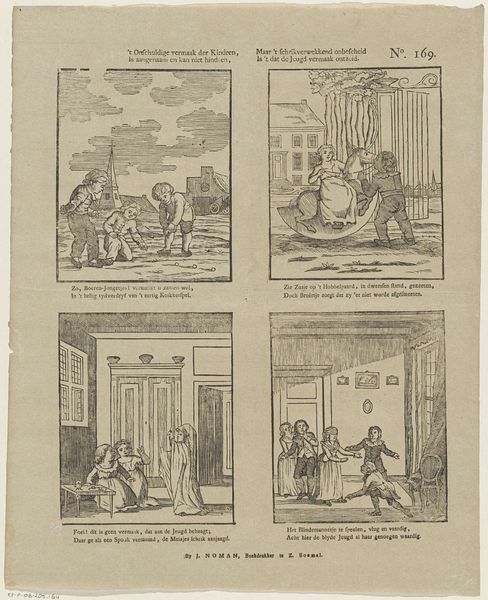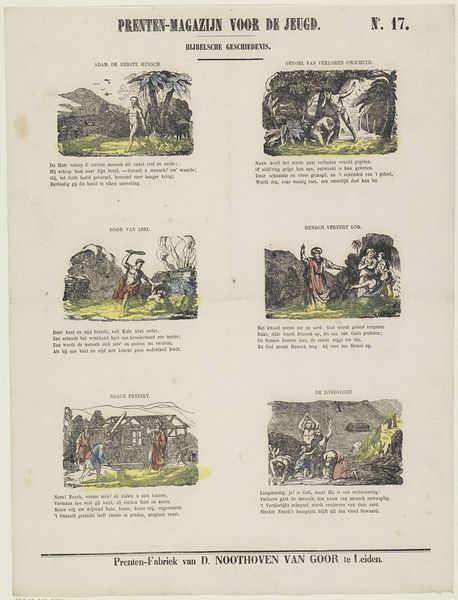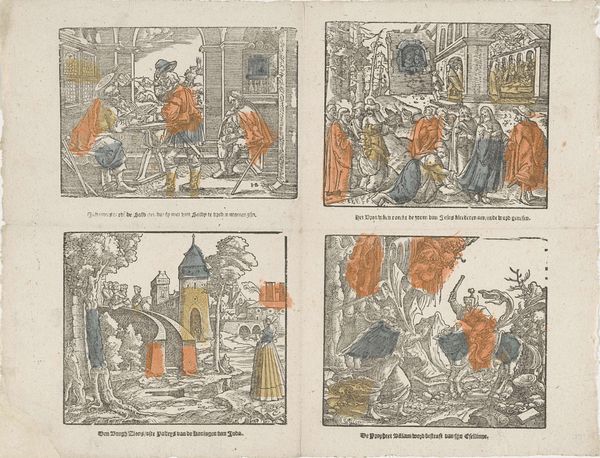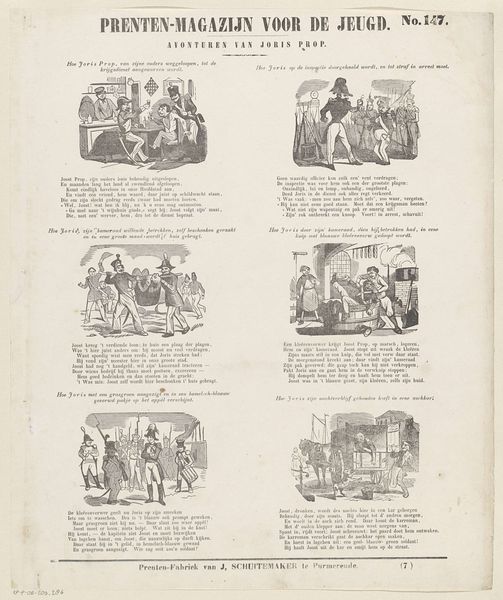
graphic-art, print, engraving
#
graphic-art
#
comic strip sketch
#
aged paper
#
medieval
#
narrative-art
# print
#
old engraving style
#
sketch book
#
personal sketchbook
#
idea generation sketch
#
sketchwork
#
sketchbook drawing
#
genre-painting
#
storyboard and sketchbook work
#
sketchbook art
#
engraving
Dimensions: height 389 mm, width 300 mm
Copyright: Rijks Museum: Open Domain
These scenes from the life of Queen Esther, printed by D. Noothoven van Goor, present a fascinating look into biblical narrative through the visual language of 19th-century printmaking. Note the recurring motif of supplication: figures kneeling, heads bowed, hands clasped in prayer. This posture transcends its immediate religious context, echoing across cultures and epochs as a universal expression of humility, reverence, or desperation. Think of similar poses in ancient Egyptian art, where pharaohs kneel before gods, or the Christian iconography of saints in devout prayer. Such gestures, deeply embedded in our collective consciousness, tap into primal emotions. The act of kneeling, lowering oneself before a higher power, evokes feelings of vulnerability and dependence. It is a powerful, almost instinctive response that resonates with us on a subconscious level, hinting at humanity's enduring search for meaning and connection to something greater than ourselves. The cycle of power and submission, plea and granting, continues to resurface, evolving with each telling. The symbols persist, adapting to the ever-changing tapestry of human experience.
Comments
No comments
Be the first to comment and join the conversation on the ultimate creative platform.
